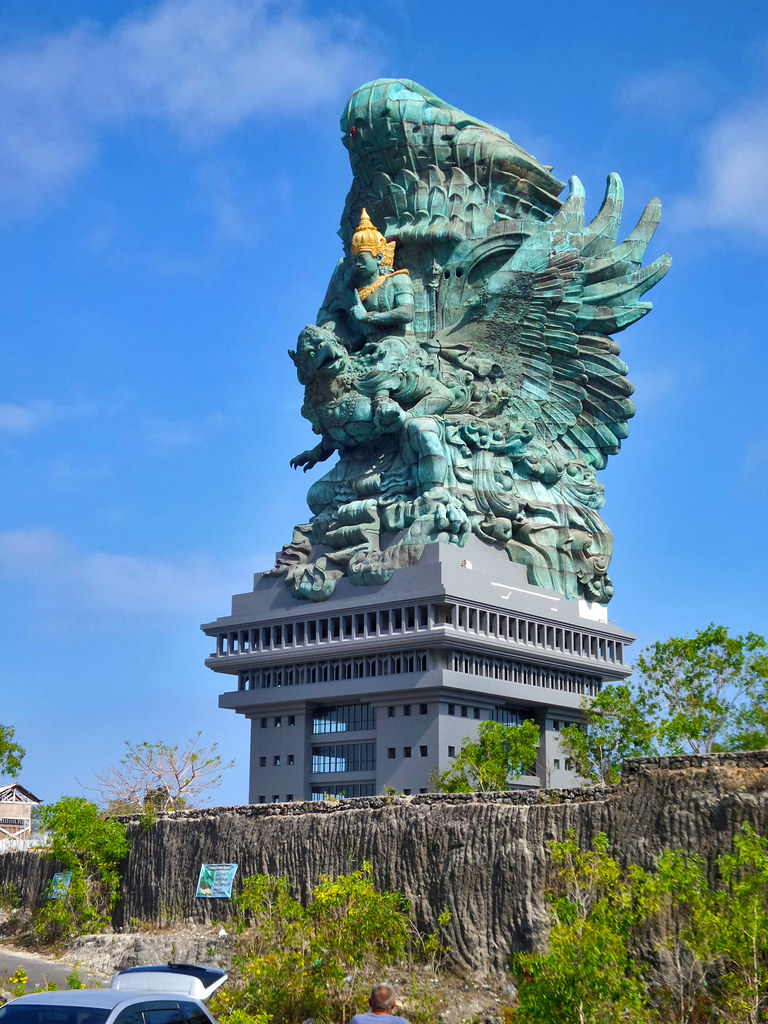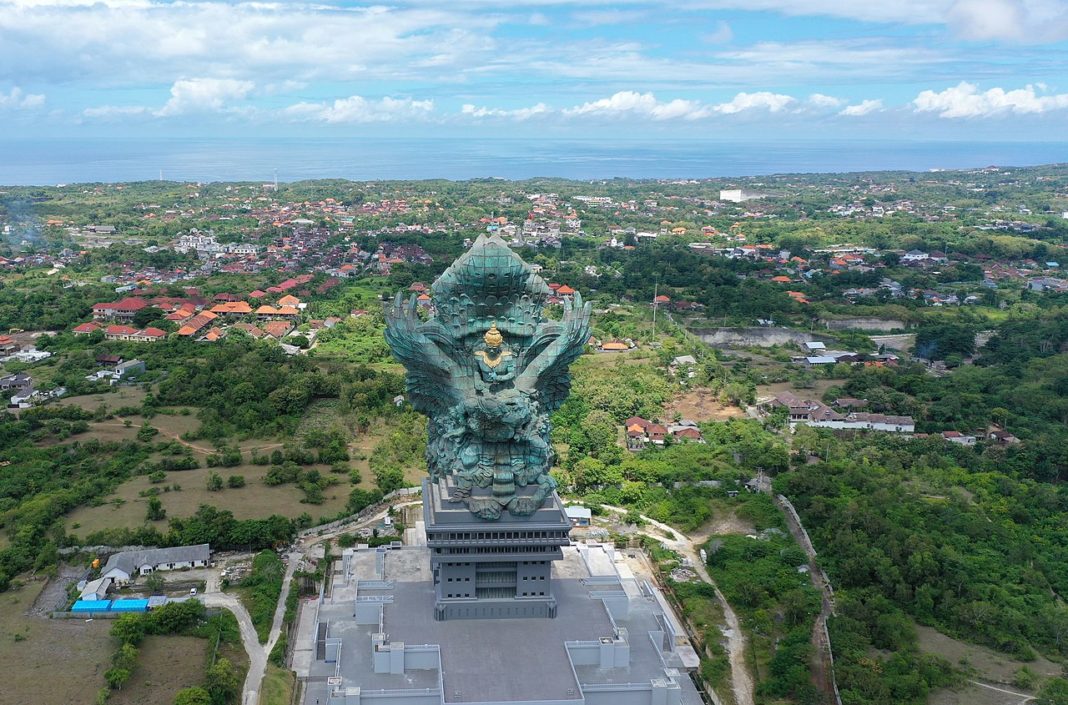GWK was designed back in 1990 by Nyoman Nuarta under the auspices of then-Tourism Minister Joop Ave, Energy Minister Ida Bagus Sudjana and Governor of Bali Ida Bagus Oka. However, the project had to be postponed due to the impact of the global economic crisis. It was not until 2018, that is 28 years later, that the statue was completed and opened.

The statue is inspired by an event that finds its roots in Hinduism about Garuda’s search for Amrita, the elixir of life. According to this story, Garuda agreed to be ridden by Vishnu in return for the right to use the elixir to liberate his enslaved mother.
 The total height of the monument, including the 46-meter base pedestal, is 122 m (400 ft). It weighs 4000 tonnes, making it the heaviest statue in Indonesia. The statue was assembled in Bali from 754 discrete modules that were constructed in Bandung, West Java and then transported to the work site. The modules were cut into 1,500 smaller pieces to accommodate the cranes maximum load. Garuda’s shape is so complex that engineers have designed special joints in the supporting structure, with up to 11 enormous steel girders coming together at the same point.
The total height of the monument, including the 46-meter base pedestal, is 122 m (400 ft). It weighs 4000 tonnes, making it the heaviest statue in Indonesia. The statue was assembled in Bali from 754 discrete modules that were constructed in Bandung, West Java and then transported to the work site. The modules were cut into 1,500 smaller pieces to accommodate the cranes maximum load. Garuda’s shape is so complex that engineers have designed special joints in the supporting structure, with up to 11 enormous steel girders coming together at the same point.
The crown of Vishnu is covered with golden mosaics and the statue has a dedicated lighting arrangement. The sculpture sits atop a building base which will function as a restaurant, museum, and viewing gallery. The Garuda Wisnu Kencana statue is designed to withstand storms and earthquakes and expected to last for the next 100 years.
According to Wikipedia.














